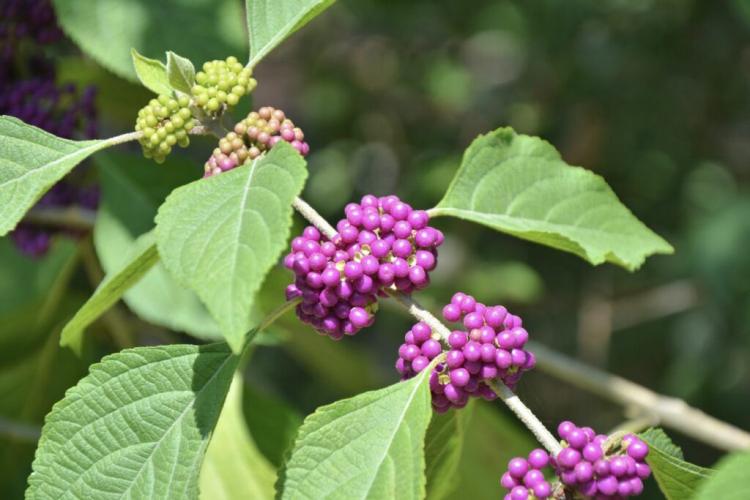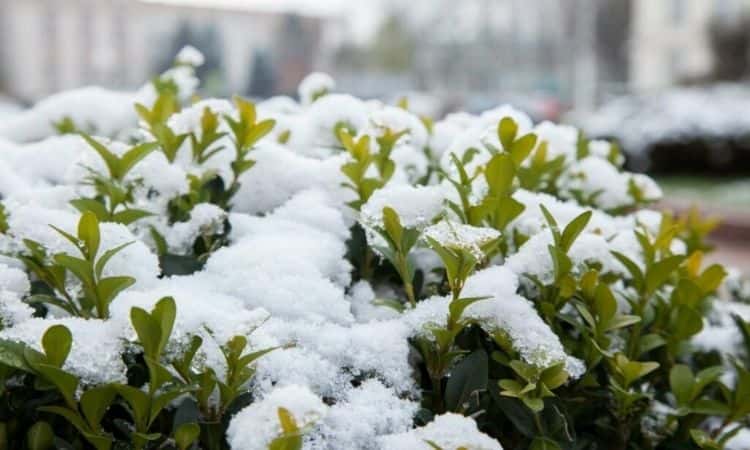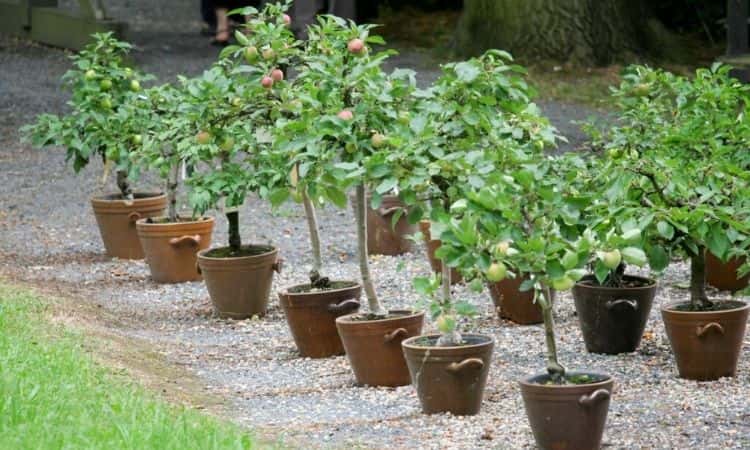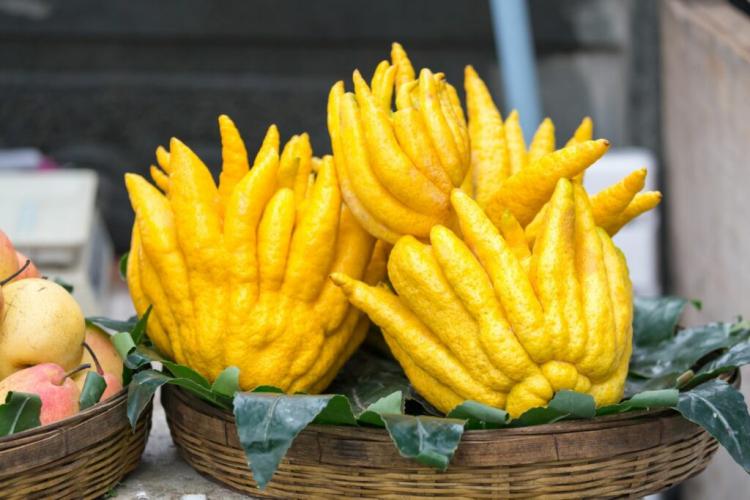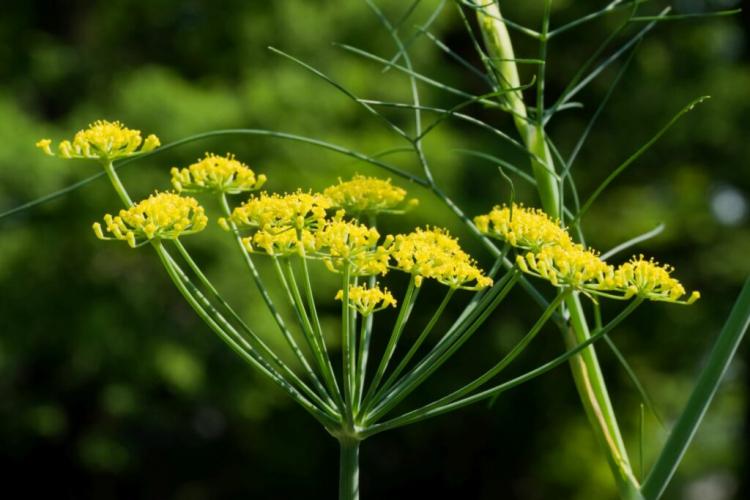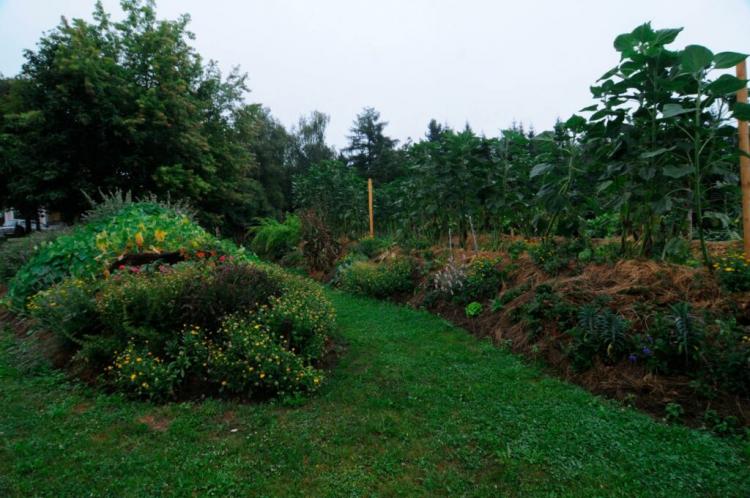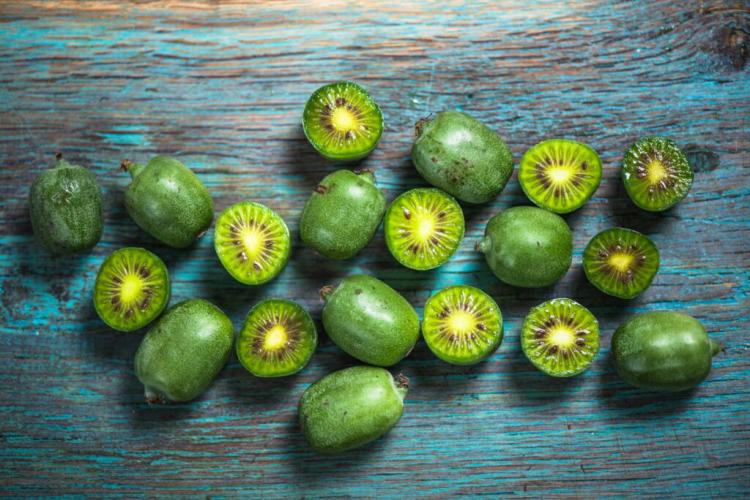Love Pearl Bush: Planting, Maintaining And Propagating
Love pearl bushes bear striking fruits and, depending on the species, show magnificent autumn leaves. We present the extraordinary genus of wood.
The genus of beautiful fruits ( Callicarpa ) belongs to the verbena family (Verbenaceae). The approximately 100 species of the genus Callicarpa come from the tropical and subtropical regions of Asia, Australia, and North and Central America. The name “Callicarpa” goes back to the Greek word “kallíkarpos”, which roughly means “rich in beautiful fruits”. In our latitudes, the love pearl bush was introduced as an ornamental wood and there are about six species in the nurseries in multiplication. We will introduce you to the unusual wood and give you tips on choosing a variety, planting, and caring for the love pearl bush.
Love pearl bush: flowering, berries, and properties
Table of Contents
The beautiful fruit is usually a 2 to 3 m high shrub, which in exceptional cases even reaches 4 m in height and is up to 2.5 m wide. The deciduous, opposite leaves of the species represented here are about 5 to 12 cm long and elliptically pointed. In autumn, the dull green and rough-feeling foliage of the beautiful fruit turns light yellow to orange.
The numerous flowers of the beautiful fruit attract numerous bumblebees, hoverflies, and bees during the flowering period from June to August. The stalked, light purple inflorescences on the biennial wood in the leaf axils of the plant can already be seen in young plants. The initially light green fruits need some time to develop and only in autumn does the shrub appear with its purple berry-like stone fruits.
There are now also white fruit varieties on the market. They have a shiny surface, can be up to 4 mm thick, and appear in cusps. In the garden, beautiful fruit bushes are a feast for the eyes, which quickly attract everyone’s attention. The conspicuous blue, purple or white-colored drupes of the shrub stand on the bare branch until around December and thus form a color accent in the winter landscape. As a bird nutrient wood, the fruits of the beautiful fruit provide additional food in winter.
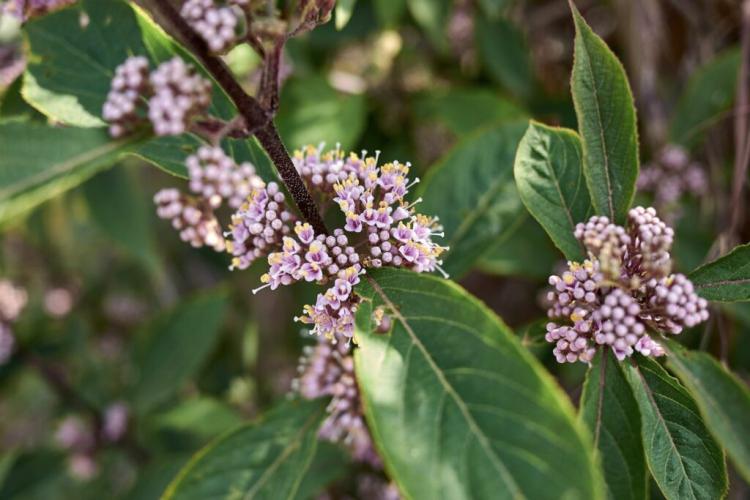
The most popular beautiful fruit species and varieties
There are various types and varieties of beautiful fruit bushes to choose from. We introduce you to the best types and varieties of love pearl bushes.
- Callicarpa Americana: American beautiful fruit with a height of 1.8 to 2.4 m and tomentose leaves. The fruits are red-violet and appear in cusps.
- Callicarpa bodinieri ˈMagical Purple Giantˈ: Up to 3 m high shrub with light purple fruits and red-orange autumn color.
- Callicarpa bodinieri ˈProfusionˈ: Love pearl bush with a height of 2 to 4 m and a width of up to 2.5 m. Deciduous shrub and light yellow to orange autumn colors.
- Callicarpa dichotoma ˈIssaiˈ: Filigree and weakly growing purple love pearl bush with a height of 2 m and a width of 1.5 m. Well, hardy variety with small, red-violet fruits and purple autumn colors.
- Callicarpa giraldii: Chinese beautiful fruit with a height and width of 2 to 3 m. In autumn, it makes shiny purple fruits about 4 mm in size.
- Callicarpa japonica ˈLeucocarpaˈ: Japanese beautiful fruit with a height and width of 1.5 to 2.5 m. This love pearl bush forms white fruits that protrude particularly conspicuously from the deciduous leaves.
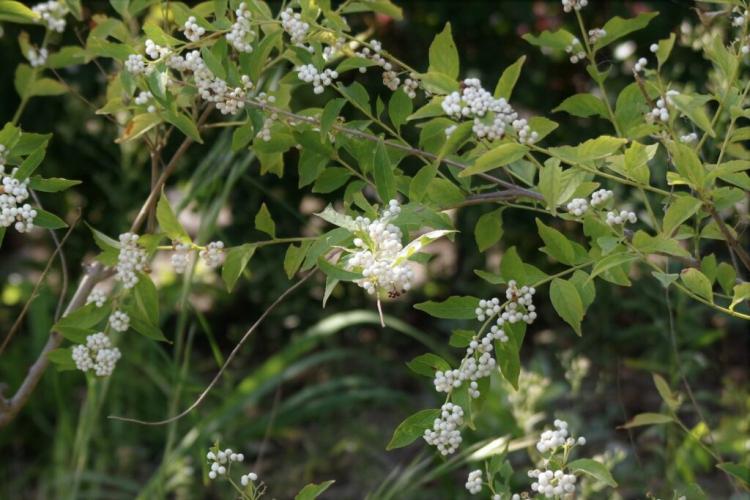
Is the beautiful fruit poisonous?
The pretty fruits of the love pearl bush are poisonous for humans and pets such as cats and dogs. The beautiful fruit is therefore not edible – but small children, in particular, can be attracted to the colorful fruits. If small children play more often in the garden without supervision, you should avoid planting beautiful fruit. The berry-shaped stone fruits of the love pearl bush are edible for birds and some species like to use them in winter.
Planting a love pearl bush: one should pay attention to this
As with most shrubs, the best time to plant the beautiful fruit is in late autumn – from October to November – or in early spring in March. The love pearl bush can be set individually as a large bush. If the fertilization and thus the fruit set should be better, you can also plant several plants together with a distance of about 2 meters from each other.
The ideal location for the love pearl bush is sunny and protected on light to medium-heavy and evenly moist, acidic to slightly acidic soils. The shrub hardly thrives in clearly calcareous locations and dies after a few meager years. Even with an acidic substrate, these soils can only be made suitable with difficulty, as the roots mainly reach into the depths and there they quickly come back to a calcareous soil.
You might like: Medlar: Everything About Varieties, Plants And Care
With the help of acidic potting soil, for example, rhododendron substrate, at least neutral or slightly alkaline soils can be made suitable for the love pearl bush. Before planting, first, loosen the soil extensively and work in acidic soil as required. The acidic substrate should above all be applied deep in the future planting hole, as the love pearl bush hardly has branched roots and above all vertical roots that hardly spread to the side.
Now place your beautiful fruit bushes in the prepared planting hole, fill it with soil, press it down well, and then water vigorously. In this way, the roots of the love pearl bush come into contact with the ground and can grow well. When replanting in late autumn and bushes that are still young up to the third year of standing, be sure to think about good winter protection.
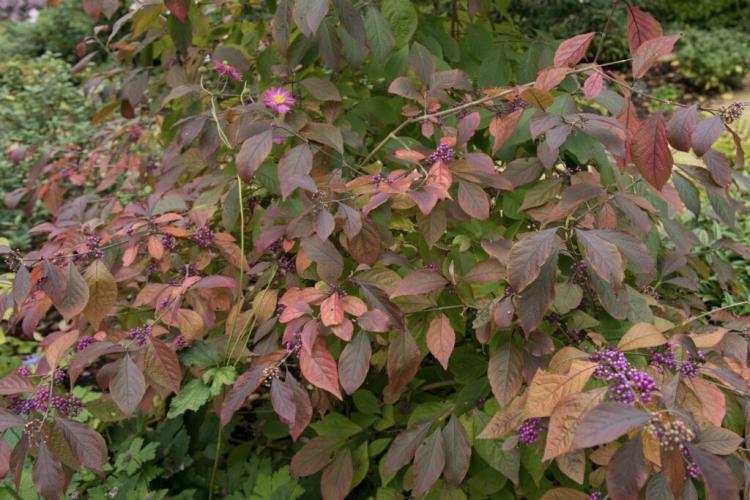
We recommend our organic universal fertilizer, which is worked into the surface under the bark mulch and, as a long-term fertilizer, slowly and evenly releases the nutrients it contains.
Planting a love pearl bush summary:
- Planting time: late autumn or early spring
- Location: sunny and sheltered
- Soil: acidic to slightly acidic
- Planting distance: about 2 meters
Love pearl bush: care
The love pearl bush is very easy to care for wood and is therefore also well suited for beginners in gardening. We give tips on the most important care measures, fertilizing and cutting the beautiful fruit.
Water and fertilize beautiful fruit
The beautiful fruit prefers an even water supply and must never be completely dry, even in midsummer. In hot summers, in particular, water young plants in the morning and cover the soil under the shrub with a layer of bark, clippings, or leaves to reduce evaporation. Established, older shrubs usually get by without any additional watering.
The situation is different with love pearl bushes in the pot, because here you have to water regularly and, on the other hand, prevent waterlogging with the help of a 3 to 5 cm thick drainage layer and good water drainage. In general, the love pearl bush does not need extra fertilization. However, you can support the growth of freshly planted shrubs with a slow-release fertilizer that is incorporated on the surface. The predominantly organic fertilizer granulate is slowly decomposed by soil organisms and thus releases its nutrients for the plant roots over a long period of time.
You might so like: Growing Capers: Everything To Plant In Your Garden
Cut the love pearl bush
The love pearl bush is easy to cut and can be easily cut back immediately after flowering to keep it in shape. If the bushes become too big and begin to bare or hardly bloom anymore, however, you should prune back heavily. This cut back by about half the length of the branch, which is necessary approximately every three to four years, can be carried out during the dormant period of the love pearl bush between November and the beginning of March.
Branches that are too long, bare, growing inward, or damaged by frost are cut off with sharp secateurs. After pruning, the beautiful fruit sprouts fresh and will not bear flowers and fruit on the biennial wood until the following year.
You might so like: Cutting Gooseberries: Professional Tips For Cutting
Propagate love pearl bush
Love pearl bushes can be propagated by sowing and cuttings. The berry-shaped stone fruits contain the seeds of the beautiful fruit. Sowing can take place indoors all year round. To do this, soak the seeds of the love pearl bush in lukewarm water for about 24 hours. Before sowing, fill a seed tray or pots with nutrient-poor potting soil.
The soaked seeds are now sown about 1 cm deep into the earth, moistened well, and allowed to germinate at about 20 ° C. The love pearl bush needs about two to three weeks to germinate with constant humidity and warmth. After a few weeks, the first true leaves will appear and the plants can be repotted or planted outside.
Young, annual shoots of the beautiful fruit can be cut in June and August for propagation from cuttings. To do this, cut off annual shoots without berries to a length of about 10 cm, remove all leaves except for the topmost, and put the shoot pieces in a seed container filled with a mixture of potting soil and a third of sand. Only the top leaves and about 1 cm of the stem should stick out of the earth.
Keep the soil well moist for the next few weeks and place the cuttings in a cool and bright place at around 10 to 15 ° C. The rooted beautiful fruit bushes spend the winter frost-free and with an economical water supply in the house. The love pearl bushes are only planted in the following spring.

Is the love pearl dip hardy?
The beautiful fruit is mostly hardy with us. Many varieties, such as Callicarpa dichotoma ˈIssaiˈ, also tolerate colder temperatures down to -20 ° C. Cold winters, which can also occur here, are particularly tough on young beautiful fruit bushes. A large part of the shrub can freeze back here. The plants are therefore grateful for winter protection from leaves and compost on the ground and a fleece or jute covering of the above-ground part of young and freshly planted shrubs.
From around the third year of standing, all beautiful fruit bushes are hardy. Love pearl bushes in the tub should be overwintered frost-free in the garden shed or shed because here there is the risk that the soil in the pot along with the sensitive roots will freeze through and the whole plant will die.
